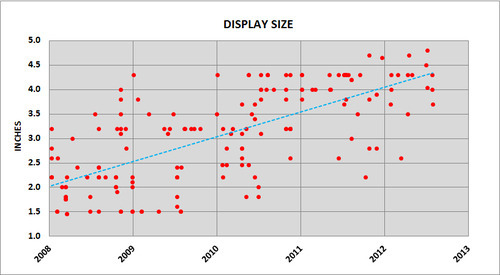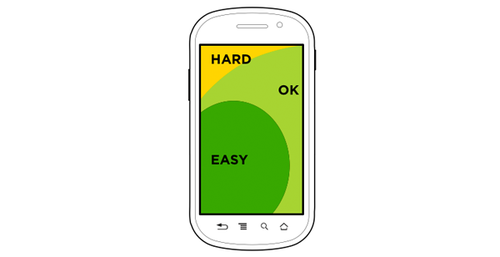Little Hands
I have monstrous hands. Massive. They’ve been deemed freakish and manly, and often I get asked if I play basketball. I come from a very tall family but somehow skipped the height gene and just got hands and feet, and played piano all my life so perhaps that spurred it, but with hands larger than the average man’s - it’s what I’ve got.
So phones for me have always, always been small - especially when cell phones first came out and texting required incredible precision and multiple taps a letter. I couldn’t type one-handed, and hated doing so. Now, with smartphones, I can easily cradle and device and find no issues with usability - which is why this article from a woman calling out the tech industry’s continued oversight of the female population based on her inability to comfortably use a device with one hand so powerful. For it’s entirely true; hand size, something that barely changes from puberty ‘til death, has become nearly entirely overlooked in smartphone manufacturing.

Since 2008, the average size of smartphone screens has more than doubled, triggered by both competitive and materials-based opportunities. Furthermore as the lines between tablets and smartphones blur, it becomes even harder to align an expected one-handed v. two-handed usage to a device. But it doesn’t seem to be directly tied to consumer abilities. Consequently, we’ve seen more work done to help highlight high, mid and low areas of accessibility on a screen, and designing mobile experiences accordingly.

But is this enough? Will developers’ adaptation of experiences be enough to suit users? As the writer in the aforementioned Medium post noted, she can’t even access key device experiences like the Camera fully. And she’s not the only one. She mentions women, who are already strong adopters of smartphones and currently experiencing these issues. She also mentions those of developing nations that have smaller bodies on average and would have more difficulty using devices as large as the ones that are popular here.
Another demographic she didn’t mention, though, are kids. And although smartphone ownership for them is low, smartphone usage for them is extremely high - 75% of all children have access to a smart device at home. Two main entry points are the “pass-back”, when parents give kids their own device to play with, named for the literal passing back of the parent’s smartphone to the child in the backseat while driving, and the “hand-me-down”, or the gifting of outdated devices, now without a data plan, for the kids to use and abuse at their will.
Smartphone and tablet ownership for this demographic is sure to increase, though - particularly if brands continue to develop devices targeted towards them, as Samsung recently has. And the shift from more of an entertainment, lean-back experience to a utilitarian-based form and function is going to happen as kids mature and become more comfortable and dependent upon devices to provide a consistent level of interactivity. And although their hands are growing as quickly as their minds, we might find them gravitating towards smaller screens, especially if the average size continues to trend upwards.
I’m lucky to have large hands, because by being short I know how frustrating other experiences are that are made for the tall. But the concept of smartphone and tablet design for hand size affects much more than those with little hands, but those with low device ownership and/or a negative perception of what these devices can do for them. And until they’re designed for everyone, they can’t be expected to be adopted by all.